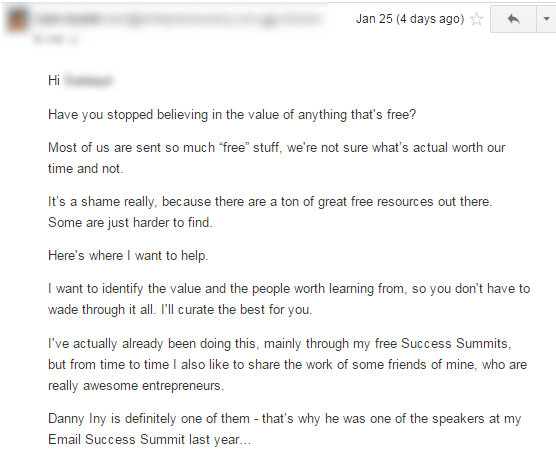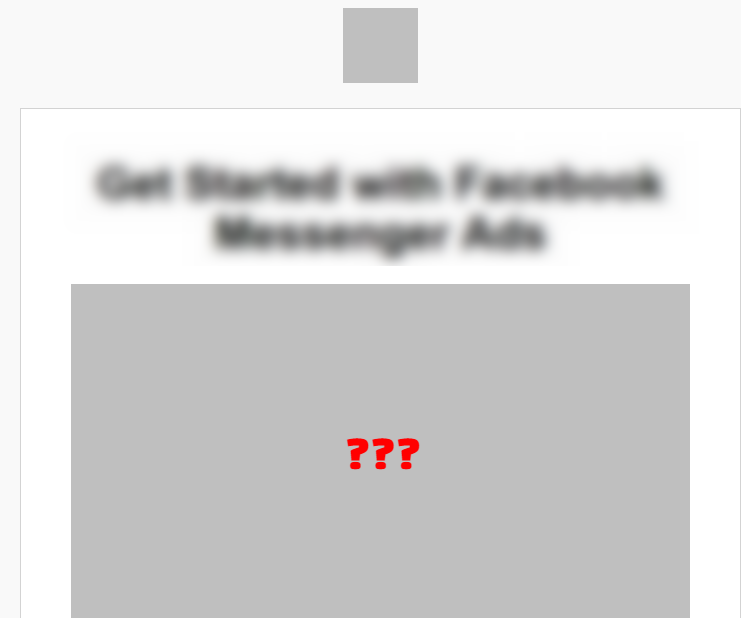Last minute checks can make the difference between an email that sucks and one that actually converts.
With click thru rates dropping (3.5%), according to Epsilon Q3 2016 trend report, it is time to be proactive and take steps to maximize your results.
How do you get through the massive volume of email and clutter that fills most people’s inboxes?
We’ve identified 9 steps to help you get noticed and maximize your ROES (return on email spend).
Let’s have a look:
1. 64% Say this is the Reason They Open Your Email
What’s the first thing a recipient sees in your email?
A survey by Chadwick Martin Bailey revealed that business/sender name is the first thing someone sees when deciding to open an email (64%). Subject line was cited as the second biggest concern (47%).
It means that the name in the “from field” must be trustworthy and easy to recognize. Your business name is usually the best choice. Use a personal name if it is more recognizable than your brand.

Not really trustworthy?
The subject line is the second most important part. Use a short and specific subject line that describes your email contents. You can use special characters, numbers, or action words to grab subscribers’ attention.

However, avoid click bait because duping subscribers into opening your email will do more harm than good.
Also, consider the preview text that appears alongside subject line in some email clients. It needs to be consistent with your subject line. Do not waste the space by simply repeating the subject line.
2. Simplifying your Message Will Result in Big Rewards
Hammock, a B2B business, achieved a 48% growth in open rate by simplifying its email content, according to a case study by Marketing Sherpa. The message needs to be short and easy to digest. Keep it to-the-point and don’t try to stuff too many ideas or information in a single email (unless it’s a monthly roundup).
The first paragraph must highlight what’s in it for them. Go through the first paragraph or opening lines from your audience’s perspective. Do you see some value in there? If the answer is in negative, write it again.
3. Create a Powerful Call to Action
The call to action is the most important part of your email. The sole purpose of your email is to market a product, event, or service. The message is there to convince, but you need to follow up with a compelling CTA to get subscribers to click.
Your call to action should ideally be placed above the fold. Stick to just one call-to-action because too many options will confuse the readers.
Emails with a single call to action resulted in 371% increase in clicks and 1617% increase in sales, as shared by Ellie Mirman, VP marketing at Toast.

All text … no CTA?
Look at the size and white space around the CTA button. Is it good enough for people browsing on mobile phones?
4. Accuracy is Important
You can revise and edit anything you post on your website or social media but there’s no coming back once you have hit the send button. You need to be extra careful while proofreading your content.
If you are using a ready-made template, make sure that the default or example text has been replaced. Double-check your spelling, grammar, acuracy of dates, and other information.
Check all of the links in your email. There’s nothing worse than a link in an email that doesn’t go anywhere.
5. Designing for Multi Screens
A consumer device preference study by Movable Ink revealed that 66% of emails are opened on Smartphone or tablet. Mobile-first approach is not an option, it is a necessity.
Keep the width between 450 and 650 pixels and use standard font and size for easy readability on all devices and email clients. Make sure that you have double-checked the plain text version. You don’t want your email to look like this:
 6. Respect the Laws
6. Respect the Laws
US marketers must adhere to CAN-SPAM act. You can search and find the relevant laws and regulations in your part of the world. Before sending the email, make sure that your email and campaign is not violating the law in any way.
Don’t use deceptive subject lines, messages, or sender name. Always include accurate contacts and physical address.
Always add a working unsubscribe-link in your emails.
7. When to Send Your Email
What’s the best day and time to send emails? Nathan Ellerling at Coschedule analyzed 10 different email studies and came up with the following answers:
Best day to send email: Tuesday and Thursday
Best time to send email: 10 a.m. to 11 a.m.
Want to reach those that didn’t open your email? SendPulse offers an automatic resend feature that will automatically send an email to the unopened recipients a second time with a new subject line. At SendPulse we make it easy to send at the right time to maximize your open rate.
Also keep the right frequency in mind. According to a report by Campaign Live, Net-a-Porter improved its conversion rate by cutting its number of emails from 10 per week to just 2.
Sending too many emails will result in high unsubscribe and low open rates. Sending too few will result in a lack of brand awareness. The ideal frequency is once or twice a week.
8. Optimize Your Landing Page
A landing page is not part of your email, but it is equally important. The best an email can do is to make people click a link and visit your website. It is the landing page that converts them into customers. You don’t want to waste all of your efforts because of a half-baked landing page.
Just like your email, focus on a single action that you want them to take. The landing page must load quickly and it needs to be visually engaging.
9. Set up Tracking
Testing and tweaking is the most effective way to find the best variations for your campaign. You need to measure your results so you can see what’s working and what’s not.
Set up tracking for metrics like deliverability, open rate, click through, and conversions.
Tracking these metrics will allow you to compare your results with industry benchmarks and see if there’s room for improvement (there always is).
So there you have it. Going through these elements will help you get the best results from your email marketing campaigns.
Do you have a checklist that is unique to your business? Please share in the comments below.





